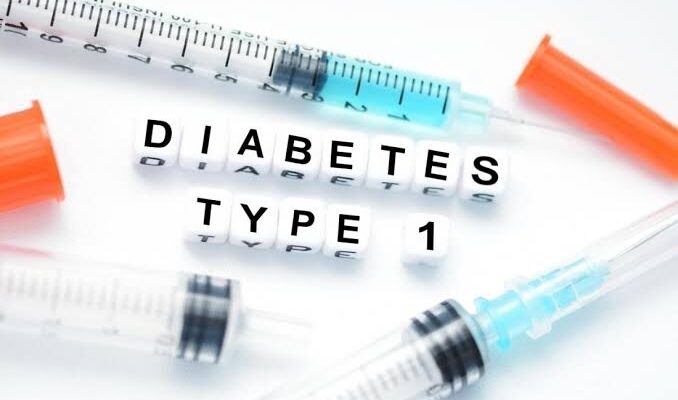Overview
Type 1 diabetes is a chronic autoimmune condition where the body’s immune system mistakenly attacks the insulin-producing beta cells in the pancreas. Without insulin, blood glucose levels rise, leading to serious health complications if not managed. Unlike type 2 diabetes, which can sometimes be managed with lifestyle changes and oral medications, type 1 diabetes requires lifelong insulin therapy to control blood sugar levels.
Treatment for type 1 diabetes focuses on closely monitoring blood glucose, administering insulin, following a balanced diet, and engaging in regular physical activity. These components work together to maintain blood sugar levels within a target range and prevent complications such as heart disease, nerve damage, and kidney issues.
This article will explore the various treatment options for type 1 diabetes, including different types of insulin therapy, blood glucose monitoring methods, dietary considerations, and emerging therapies. Through effective management, individuals with type 1 diabetes can lead healthy and active lives.
Table of Contents
When to See a Doctor
For individuals with type 1 diabetes, regular follow-ups with healthcare providers are crucial for effective disease management. Early recognition of symptoms and prompt medical intervention can prevent complications and improve quality of life. It’s important to see a doctor if you experience any of the following:
- High or Low Blood Sugar Levels. If you experience frequent high (hyperglycemia) or low (hypoglycemia) blood sugar episodes despite following your treatment plan, you may need adjustments to your insulin dose or other management strategies.
- Unexplained Symptoms. Unusual symptoms such as extreme fatigue, frequent infections, unexplained weight loss, or persistent nausea could indicate blood sugar issues or other complications related to diabetes.
- Diabetic Ketoacidosis (DKA) Warning Signs. If you notice symptoms like excessive thirst, frequent urination, fruity-smelling breath, confusion, or rapid breathing, seek immediate medical help. These symptoms may indicate DKA, a serious condition that occurs when blood sugar levels are dangerously high.
- Signs of Complications. Persistent symptoms such as numbness or tingling in your hands or feet, blurred vision, or slow-healing wounds can signal potential complications of diabetes, such as neuropathy, retinopathy, or circulatory issues.
- Issues with Insulin Administration. If you have difficulty with insulin injections or managing your insulin pump, a healthcare provider can offer guidance or suggest alternative options for better blood sugar control.
Regular visits to a doctor are essential for anyone with type 1 diabetes to adjust treatment plans as needed and to monitor for potential complications. Prompt medical attention helps ensure optimal diabetes management and supports overall health and well-being.
Type 1 Diabetes Treatment Options

Image Source: unsplash.com
If a patient is confirmed to have type 1 diabetes, they will need lifelong treatment to manage symptoms and prevent complications. Some of the most common treatments for managing type 1 diabetes include the following:
- Regular Blood Sugar Monitoring. Continuous blood sugar monitoring is essential for assessing the effectiveness of treatment and managing diabetes on a daily basis. Patients are encouraged to have their own glucose monitoring device, which allows them to check their blood sugar levels conveniently at home. By monitoring blood sugar regularly, patients can make timely adjustments to their insulin dose, food intake, and physical activity.
- Insulin Injections. Since the body no longer produces insulin naturally in type 1 diabetes, daily insulin injections are required. Oral insulin is ineffective in type 1 diabetes because the body’s immune system destroys it before it can enter the bloodstream. Therefore, insulin injections directly deliver insulin into the muscle or subcutaneous tissue, enabling it to reach the bloodstream and help regulate blood sugar levels.
- Insulin Pump. For more advanced cases, an insulin pump may be recommended. This small device is connected to the patient via a thin tube or cannula, usually inserted into the abdomen. The insulin pump monitors the body’s insulin needs and automatically delivers insulin as required. This device allows for precise and continuous insulin delivery, reducing the risk of blood sugar fluctuations. The patient must wear the insulin pump daily to prevent symptoms like fatigue, dizziness, and other issues associated with unstable blood sugar.
- Healthy Diet and Exercise. A balanced diet and regular exercise are vital components of diabetes management. Proper nutrition provides the body with essential nutrients and helps stabilize blood sugar levels. Exercise, on the other hand, strengthens the muscles, improves overall health, and helps regulate blood sugar levels. Combining treatment with healthy lifestyle habits can significantly improve the patient’s quality of life and long-term outcomes.
By adhering to these treatments and lifestyle changes, individuals with type 1 diabetes can effectively manage their condition, reduce the risk of complications, and maintain a healthy, active lifestyle.
Type 1 Diabetes Prognosis
The prognosis for individuals with type 1 diabetes has improved significantly with advancements in insulin therapy, glucose monitoring, and lifestyle management. With proper care, most people with type 1 diabetes can lead healthy, active lives. Consistently managing blood sugar levels helps reduce the risk of long-term complications, such as cardiovascular disease, kidney damage, nerve damage, and vision problems.
However, type 1 diabetes requires lifelong management, and uncontrolled blood sugar levels can lead to serious health issues over time. The risk of complications increases if blood sugar is frequently too high or too low. Early detection, routine monitoring, and prompt treatment of complications are essential to maintain quality of life and overall health.
While there is currently no cure for type 1 diabetes, ongoing research in areas like artificial pancreas technology, beta cell transplantation, and other therapies offers hope for improved treatment options in the future. Through effective disease management, regular healthcare visits, and support from medical professionals, people with type 1 diabetes can live long, fulfilling lives.


